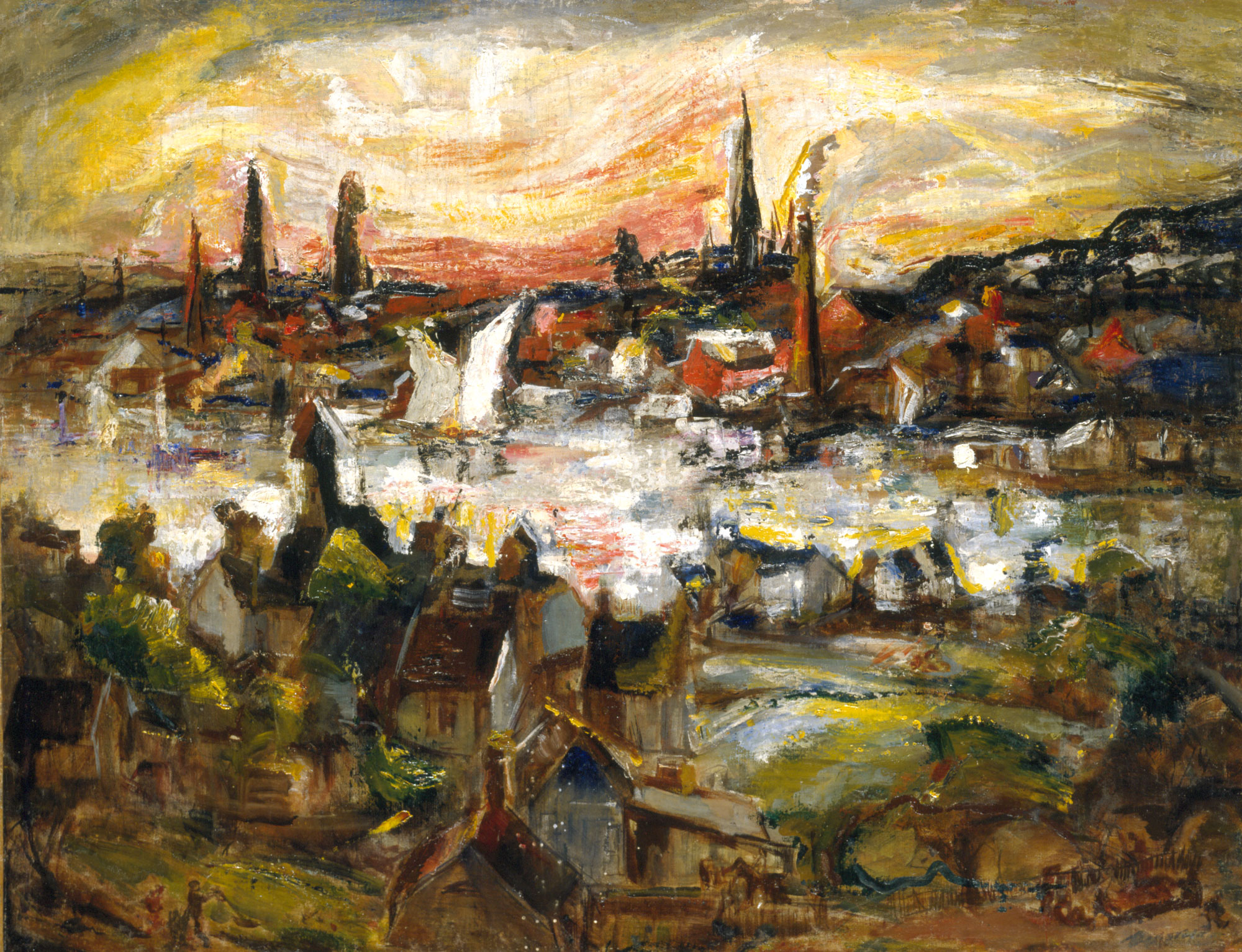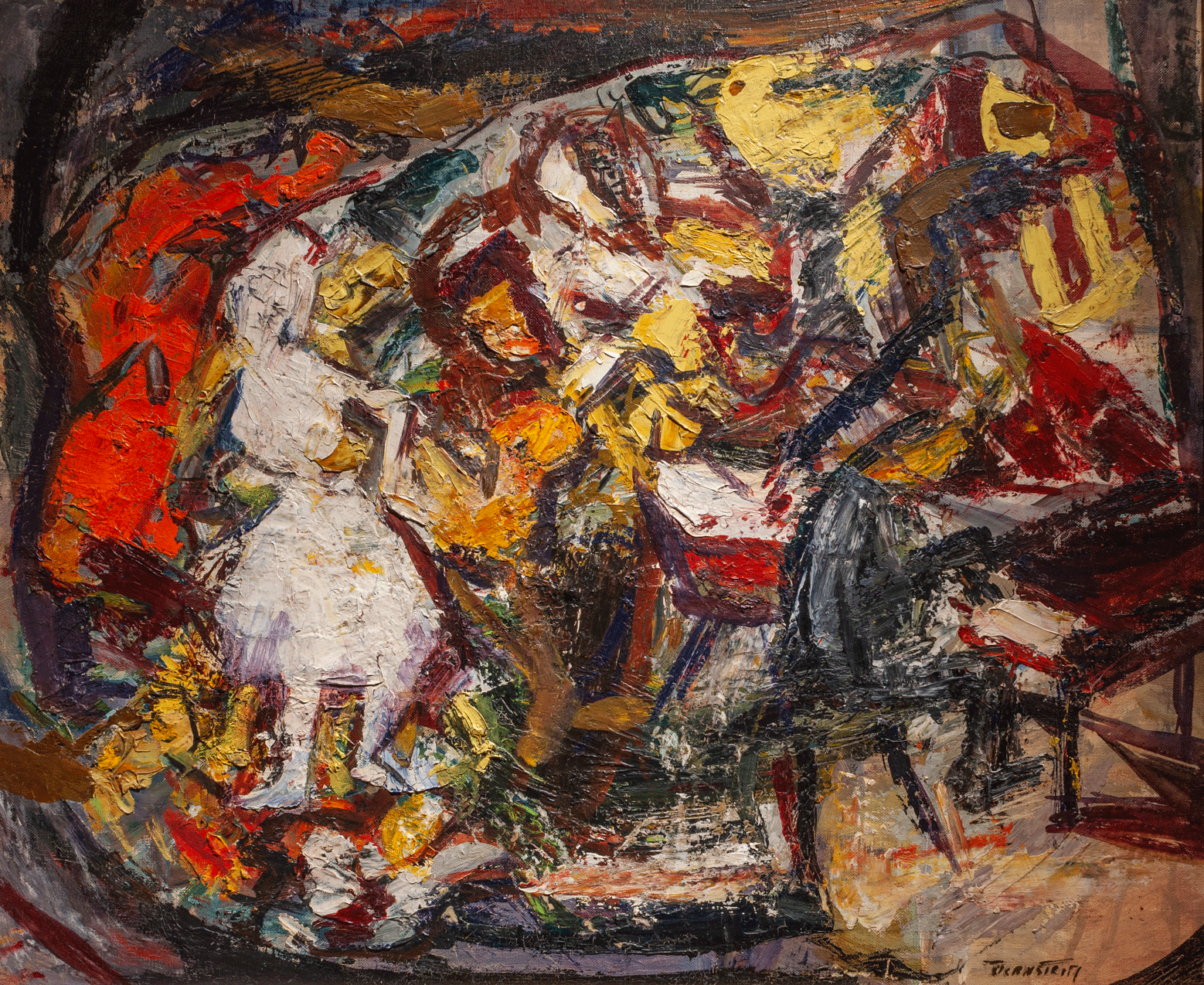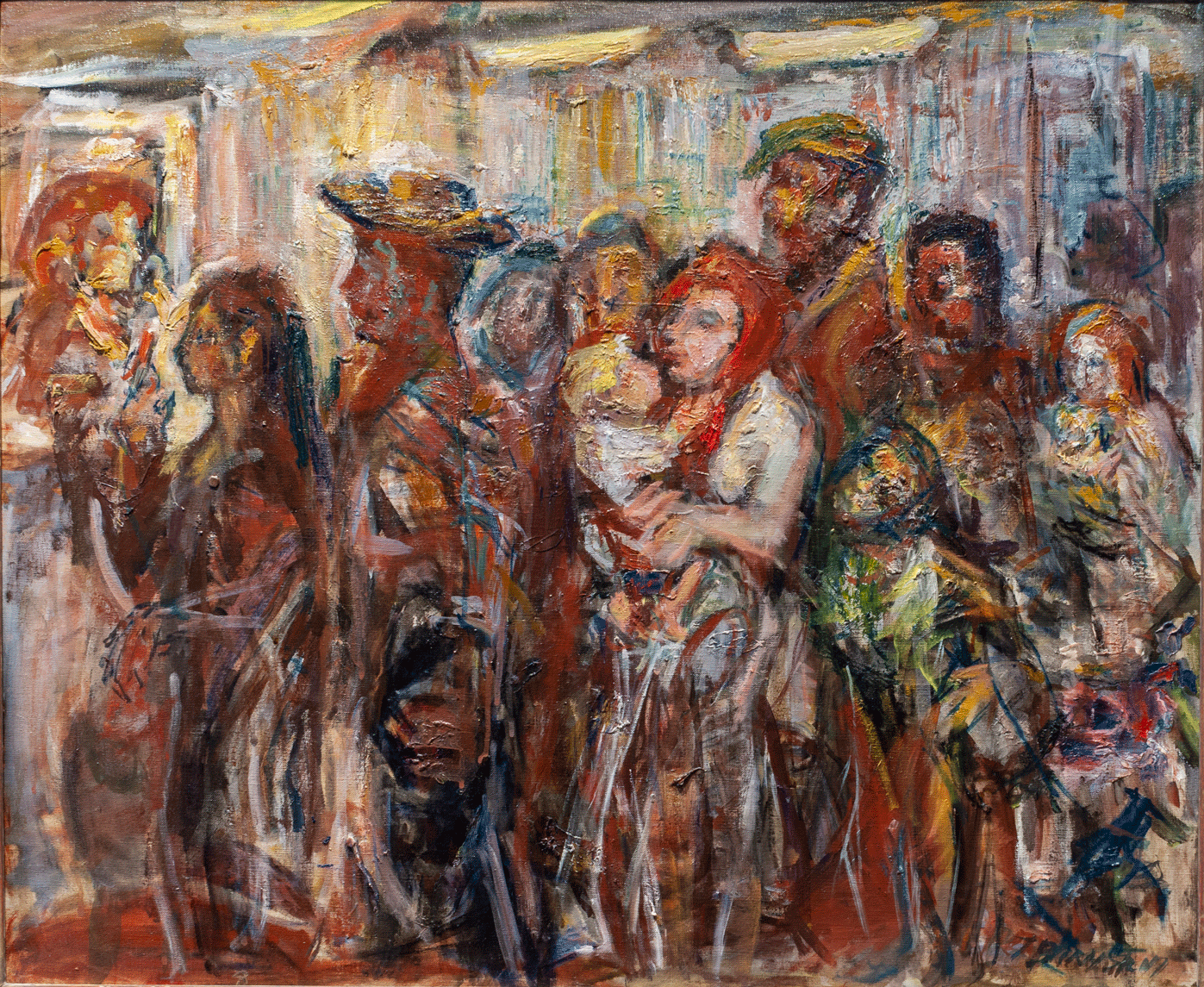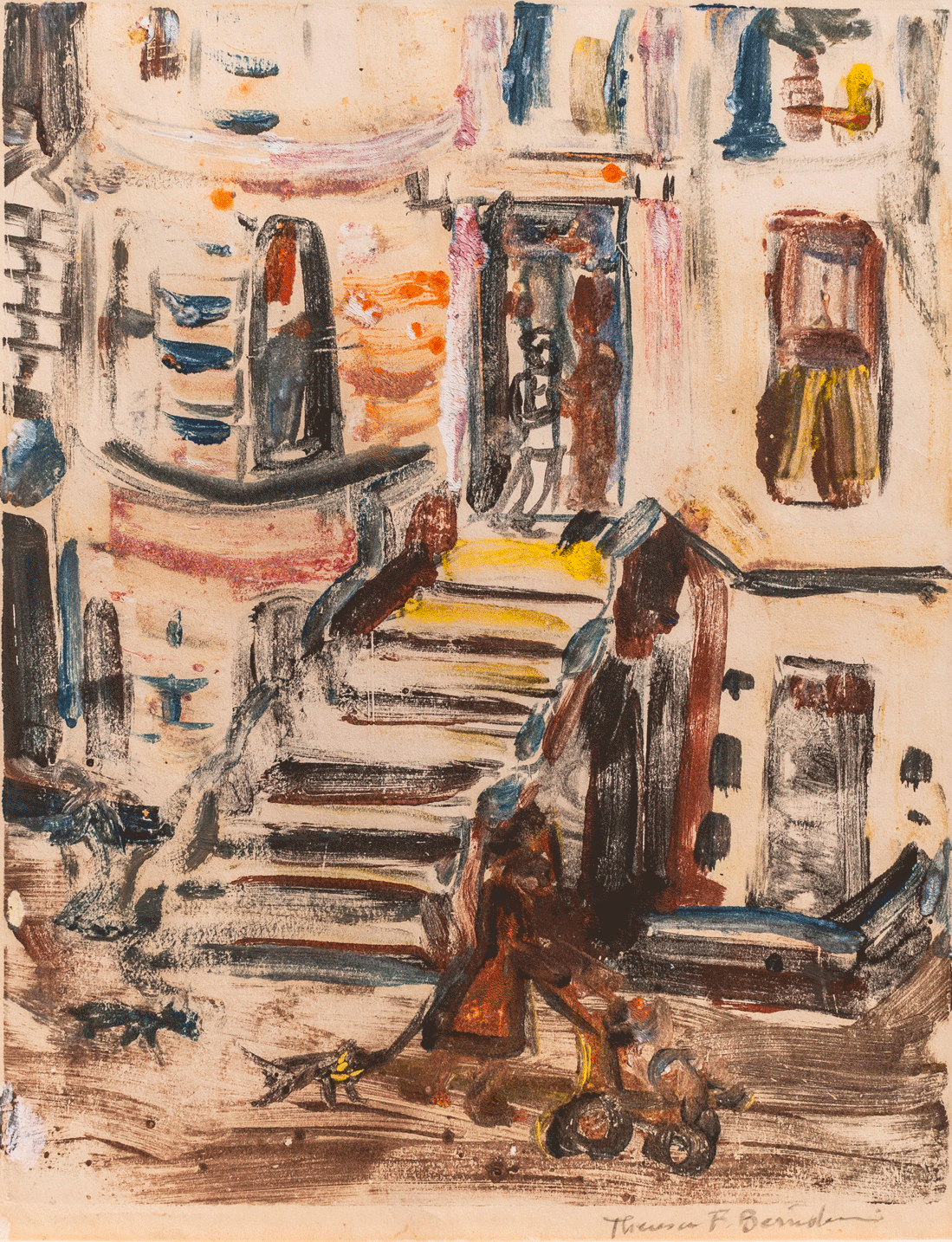




































Your Custom Text Here
Theresa Bernstein (1890–2002)
Born in Cracow, Poland, an infant Theresa Ferber Bernstein with her parents immigrated to the United State to live in Philadelphia. Her artistic training was at the Philadelphia School of Design for Women (now Moore College of Art) and the Art Students League in New York City after moving there in 1911. Often misrepresented as an Ashcan artist, hopefully art historian Elsie Heung has put this mistake to rest. “Bernstein’s urban vision has a distinct quality to it that operates both within and independently of the Ashcan School. It is only when we challenge her frequent misidentification as an Ashcan painter that we can begin to recognize her as a unique artist in her own right, rather than as a follower of her male contemporaries.” Elsie Heung, Gail Levin, Theresa Bernstein A Century in Art, pages 91 and 92. 2013. New York City was her home from 1911 until her death. She married artist William Meyerowitz in 1919.
Bernstein chronicled urban life in America on canvas for at least 70 years. Her ready response to comments on her change of style was “I didn’t change, the times did.”
The changing times are seen in her paintings In the Elevated, Evening Stroll and her war paintings in the teens; Five Points Laundry Day and Lil Hardin and Louis Armstrong in the 1920s; Madison Square Garden Circus in the 1930s; Madison Square Garden Concert in the 1940s; Judy Garland in the 1950s; Hippies in Central Park in the l960s; Ticket Line in the 1970s; and Smoochathon and Break Dancers in the 1980s.
Bernstein and husband Meyerowitz traveled to Israel almost annually from 1952 until his death in 1981. Her painting Israeli Wedding captures the constant vigilance required in that nation. See the soldier standing guard on the right.
Bernstein returned to their home in Gloucester, Massachusetts summers after Meyerowitz death in 1981 until the late 1990s.
Theresa Bernstein (1890–2002)
Born in Cracow, Poland, an infant Theresa Ferber Bernstein with her parents immigrated to the United State to live in Philadelphia. Her artistic training was at the Philadelphia School of Design for Women (now Moore College of Art) and the Art Students League in New York City after moving there in 1911. Often misrepresented as an Ashcan artist, hopefully art historian Elsie Heung has put this mistake to rest. “Bernstein’s urban vision has a distinct quality to it that operates both within and independently of the Ashcan School. It is only when we challenge her frequent misidentification as an Ashcan painter that we can begin to recognize her as a unique artist in her own right, rather than as a follower of her male contemporaries.” Elsie Heung, Gail Levin, Theresa Bernstein A Century in Art, pages 91 and 92. 2013. New York City was her home from 1911 until her death. She married artist William Meyerowitz in 1919.
Bernstein chronicled urban life in America on canvas for at least 70 years. Her ready response to comments on her change of style was “I didn’t change, the times did.”
The changing times are seen in her paintings In the Elevated, Evening Stroll and her war paintings in the teens; Five Points Laundry Day and Lil Hardin and Louis Armstrong in the 1920s; Madison Square Garden Circus in the 1930s; Madison Square Garden Concert in the 1940s; Judy Garland in the 1950s; Hippies in Central Park in the l960s; Ticket Line in the 1970s; and Smoochathon and Break Dancers in the 1980s.
Bernstein and husband Meyerowitz traveled to Israel almost annually from 1952 until his death in 1981. Her painting Israeli Wedding captures the constant vigilance required in that nation. See the soldier standing guard on the right.
Bernstein returned to their home in Gloucester, Massachusetts summers after Meyerowitz death in 1981 until the late 1990s.
Katie, ca. 1913, Oil on canvas, 26x22 inches
Hawthorne Lane, Gloucester, 1917, Oil on canvas, 35x27 inches
Minstrels, 1910, Oil on canvas, 18x22 inches
Tuchhalle, Kracow, 1922, Oil and pen on board
Music on the Shore, d. 1919–22, Oil on canvas, 27x35 inches
Reproduced 21st Century: Levin, Patricia Burnham, Theresa Bernstein, A Century in Art p. 135
Gloucester at Twilight, 1916–29, Oil on canvas, 27x35 inches
There was a Gloucester spectacular sunset Bernstein saw in 1929 and she rushed to record it. She couldn’t find a blank canvas so grabbed an earlier 1916 work and painted over it.
Swing, 1930’s, Oil on board, 20x25 inches
Stage Fort Park, Gloucester, ca. 1930, 27x35 inches
Still Life with White Pitcher, 1933, Oil on canvas, 30x25 inches. Reproduced 21st Century: Kyrie O'Connor, Houston Chronicle, Applause for Child Advocates, Section E, pages 1 and 2.
Madison Square Garden Concert, ca. 1942, Oil on canvas, 27x32 inches
J.S. Bach Still Life, ca. 1950, Oil on canvas, 40x30 inches
Boston Tea, ca. 1960, Oil on canvas, 30x25 inches
Reproduced: Levin, Burnham, Theresa Bernstein, A Century in Art, p. 139
Hippies Central Park, 1968, Oil on cloth relined on canvas, 25x30 inches
Seagull Still Life, ca. 1965, Oil on canvas, 30x25 inches
Horn Player, 1926, Oil on board, 11½x9 inches
Ticket Line, 1970’s, Oil on canvas, 25x30 inches
Bix Beiderbecke, 1930. 12X4 inches oil on canvas
Madison Square Garden Circus, ca. 1936, Oil on canvas, 28x35½ inches Reproduced: Levin, Theresa Bernstein, A Century in Art, p. 185
Basketball, 1980s, Oil on canvas, 35x27 inches
Tulips, 1925, oil on canvas, 25 x 20½ inches
Little Girl, 1920, Monotype, 8¾ x7¼ inches
New York Street, ca. 1924, Monotype, 9¾x8 inches
Exhibited 1948 Smithsonian Institution U.S. National Museum, Washington, D.C.
Exhibition of Etchings and monotypes by Theresa F. Bernstein
Reproduced in exhibition brochure
After the Storm, 1925, Monotype, 8x9¾ inch (ghost)
Mt. Pleasant Ave., Gloucester, 1925, Monotype, 10½x7¾ inches
Beach, 1930s, Monotype, 7¾x8¾ inches
Blessing the Fleet, 1930s, Monotype, 8x9¾ inches
Fish Tales, 1930s, Monotype, 7¾ x 8¾ inches
Cape Ann Beach, 1930s, Monotype, 8x11½ inches
Couple in Central Park, 1943, Monotype, 7¼ x 5¾ inches
American Eagle, 1945, Monotype, 9¾x7¾ inches
Children on the Docks, 1930s, Monotype, 11¼x8¾ inches
Hot Time, 1950s, Monotype, 8½x10½ inches
Reproduced in 21st Century: Levin, Theresa Bernstein, A Century in Art, Stephanie Hackett, Impressions, Theresa Bernstein as Printmaker p. 165.
Smoochathon, 1983, Manhattan, Oil on canvas, 25x30 inches
Bernstein frequently walked Columbus Avenue. In the 1980s she eyed a window display for several days—couples kissing the day long—in a lingerie shop. Although her eyesight was failing she had to capture this, one of her last urban scenes.
The Net Menders, ca. 1920, Etching, 7¼ x 9¼
Image reproduced Gail Levin’s Theresa Bernstein, A Century in Art p. 95
Hands, d. 11/23/13, Charcoal Drawing on paper, 23x17 inches
Mrs. Andrews, 1921, Etching, 9¾x7¾ inches
For more information on Theresa Bernstein, go to http://theresabernstein.newmedialab.cuny.edu.
For a comprehensive review of CUNY's Professor Gail Levin and her graduate students' three year efforts in mounting the exhibition Theresa Bernstein A Century in Art especially read Regina Weinreich in The Forward December 27, 2013 by pressing ABOUT, then RECENT PRESS in that CUNY website.
Art Essay: Theresa Bernstein, a Docent's Perspective
By Benedict Duffy ©2015
ART TIMES Spring 2015
http://arttimesjournal.com/art/Art_Essays/spring_15_benedict_duffy/theresa_bernstein.html